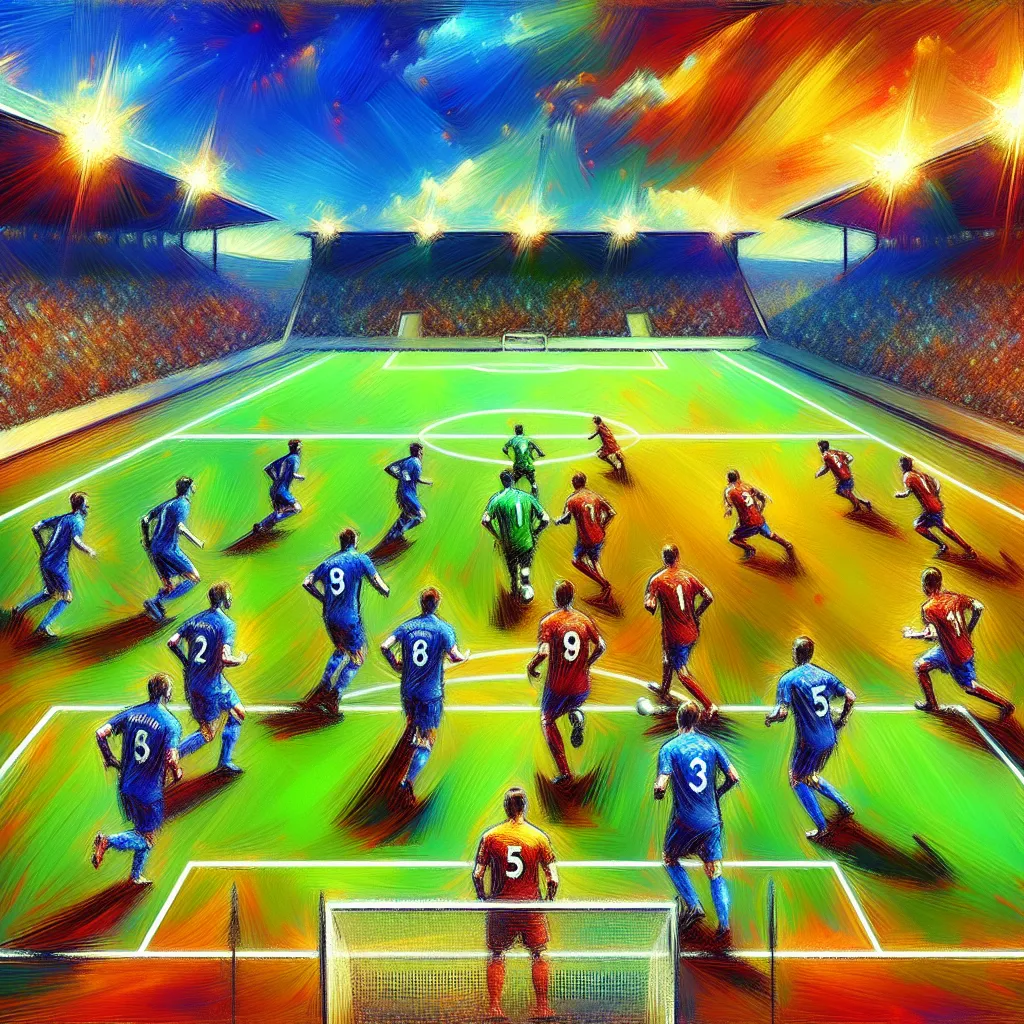
- Published on
- Authors

- Name
- Sports Tips
Maximizing the 3-6-1 Formation for Defensive Stability
The 3-6-1 formation isn't your typical go-to, but when executed properly, it can provide an impenetrable shield and optimal control over the midfield. This article dives into the defensive perks of this unique setup and how players and coaches can leverage its strengths effectively.
Formation Overview
At a glance, the 3-6-1 formation looks like this:
GK
/ | \
CB CB CB
| | |
LW CM CM CM RW
| |
CAM
|
ST
- GK: Goalkeeper
- CB: Center Backs
- LW: Left Wing
- CM: Central Midfielders
- RW: Right Wing
- CAM: Central Attacking Midfielder
- ST: Striker
Defensive Benefits
The core concept behind the 3-6-1 is to crowd the midfield and create defensive stability. Here's why it works well:
- Solid Back Line: The trio of center backs ensures that there's always cover, making it hard for opponents to break through with one-on-ones.
- Midfield Domination: With six players in the midfield, you can achieve numerical superiority, cutting off passing lanes and pressing effectively.
- Flexibility: The formation allows for quick transitions between defensive and attacking plays, thanks to the versatile roles of midfielders.
Tactics and Tips
1. Center Backs: Rock Steady
- Stay Disciplined: Center backs in a 3-6-1 must stay organized and communicate effectively. The key is to be patient and read the game.
- Wide Coverage: With three central defenders, they can shift across the pitch, covering wide areas when needed.
2. Midfield: The Heart of the Formation
- Box-to-Box Midfielders: Have at least two midfielders capable of covering both defense and attack. This ensures balanced play on both ends.
- Defensive Midfielders: One or two should play closer to the defensive line to break up attacks early and provide extra cover.
3. Wing Dynamics
- High Work Rate: Wing players need to have stamina to track back when defending, and sprint forward during counter-attacks.
- Spacing Discipline: Wingers should maintain width to stretch the opposition and create more room for central players.
4. Striker and Attacking Mid: Precision and Timing
- Hold-Up Play: The striker should be able to hold the ball up and bring midfielders into play.
- Creative Burst: The attacking midfielder must possess creativity and vision to exploit channels and create opportunities.
Potential Challenges
- Vulnerable Flanks: With a compact midfield, the formation can be susceptible to quick, wide attacks. Address this by instructing wingbacks to drop back quickly.
- Lonely Striker: The lone striker might get isolated. Mitigate this through supportive play from the attacking midfielder and wingers.
Pro Tips
- Formation Fluidity: Train players to switch seamlessly between a 3-6-1 and a 5-4-1 to adapt to different match situations.
- Counter-Pressing: Instruct your midfielders to apply high pressure immediately after losing possession, taking advantage of the density in the middle.
Final Thoughts
Mastering the 3-6-1 formation is all about balance, communication, and the versatility of your players. It may take time to perfect, but when done right, it provides unparalleled defensive stability and control over the midfield. Coaches should focus on drills that enhance positional awareness and quick transitions, while players should prioritize stamina and tactical understanding.
With the right approach, the 3-6-1 can be more than just a formation; it can be your team’s secret weapon!
